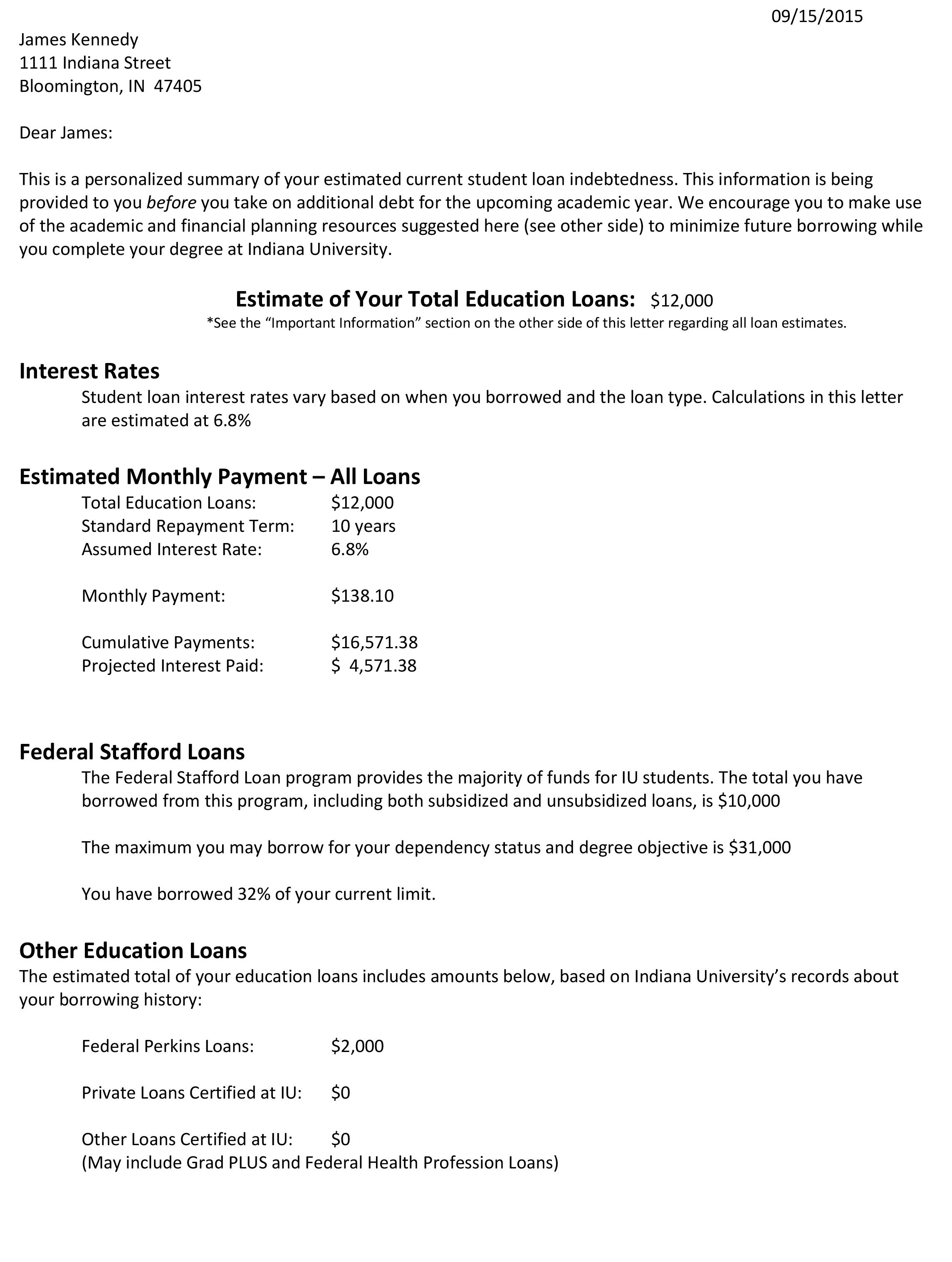Indiana University is changing the way its students are borrowing to pay for their education.
Back in 2012, the school began sending letters to students, estimating their total student loan debt and future monthly payments. Since then, the university says borrowing by undergraduates has dropped by 18%.
“We want students at every year to understand the debt they have,” says Jim Kennedy, associate vice president for student services and systems. “They get this every year, and they can see where they’re at.”
Back in 2012, after holding a series of focus groups in which students revealed they were confused about how much debt they had, the school decided to launch a series of initiatives designed to empower them financially.
Any of IU’s 110,000 students carrying loans receive the letter (you can see an example letter below), and they also have access to MoneySmarts, a series of podcasts and campus programs that focus on the intersection of college and money. (The most popular, according to Kennedy, is “How Not to Move in With Your Parents.”)
Around each of the school’s seven campuses, signs and posters encourage students to take “15 to finish,” or 15 credits so that they graduate in four years, thereby minimizing their loans. Peer-to-peer counseling and a service that contacts students post-graduation about their repayment options are two other ways the school is trying to secure its graduates’ future.
“We’re just very concerned about students and student loan debt, and our administration is very concerned,” says Kennedy.
He adds, “Anything that colleges can do to raise awareness about student loans is a very positive thing.”
Remember, defaulting on a student or any other type of loan seriously damages your credit score, and because student loans are rarely discharged in bankruptcy, the debt can beat down on you for decades. (You can see how your student loans are currently impacting your credit scores for free on Credit.com.)
There are some options for people who are behind on payments to get back on track, though. To get out of default, you can combine eligible loans with a federal Direct Consolidation Loan, or you can go through the government’s default rehabilitation program. If you make nine consecutive on-time payments (the payments can be extremely low), your account goes back into good standing, and the default is removed from your credit report.
An example of the school’s loan letter is below:
More Money-Saving Reads:
Image: sanjeri
You Might Also Like
August 26, 2020
Student Loans
August 4, 2020
Student Loans
July 31, 2020
Student Loans









